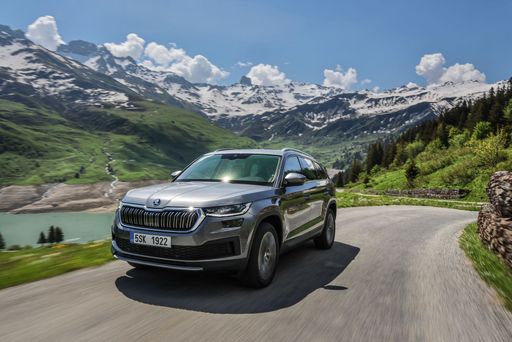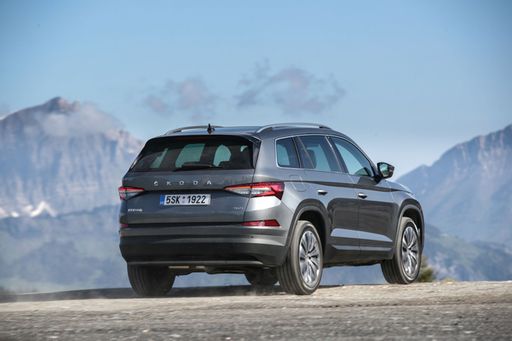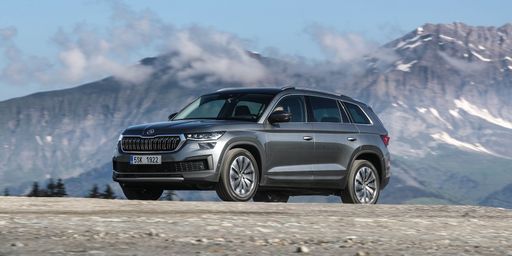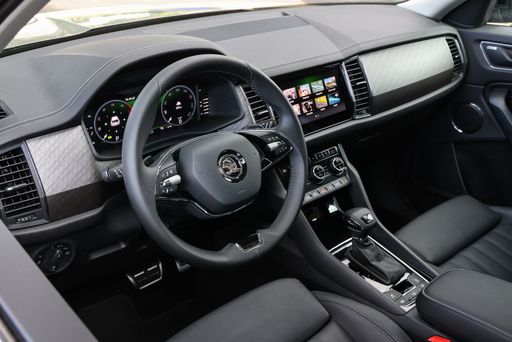Skoda Kodiaq vs Kia PV5 – Which one offers the better deal?
Compare performance, boot capacity, efficiency and price at a glance.
Find out which car is the better choice for you – Skoda Kodiaq or Kia PV5?
Costs and Efficiency:
Price and efficiency are key factors when choosing a car – and this is often where the real differences emerge.
Kia PV5 has a to a small extent advantage in terms of price – it starts at 32800 £, while the Skoda Kodiaq costs 36800 £. That’s a price difference of around 4028 £.
As for range, the Kia PV5 performs decisively better – achieving up to 400 km, about 277 km more than the Skoda Kodiaq.
Engine and Performance:
Power, torque and acceleration say a lot about how a car feels on the road. This is where you see which model delivers more driving dynamics.
When it comes to engine power, the Skoda Kodiaq has a distinct edge – offering 265 HP compared to 163 HP. That’s roughly 102 HP more horsepower.
In acceleration from 0 to 100 km/h, the Skoda Kodiaq is convincingly quicker – completing the sprint in 6.30 s, while the Kia PV5 takes 10.70 s. That’s about 4.40 s faster.
In terms of top speed, the Skoda Kodiaq performs significantly better – reaching 231 km/h, while the Kia PV5 tops out at 135 km/h. The difference is around 96 km/h.
There’s also a difference in torque: Skoda Kodiaq pulls clearly perceptible stronger with 400 Nm compared to 250 Nm. That’s about 150 Nm difference.
Space and Everyday Use:
Beyond pure performance, interior space and usability matter most in daily life. This is where you see which car is more practical and versatile.
Both vehicles offer seating for 5 people.
In curb weight, Skoda Kodiaq is a bit lighter – 1684 kg compared to 1860 kg. The difference is around 176 kg.
In terms of boot space, the Kia PV5 offers distinct more room – 1320 L compared to 910 L. That’s a difference of about 410 L.
In maximum load capacity, the Kia PV5 performs clearly better – up to 4420 L, which is about 2315 L more than the Skoda Kodiaq.
When it comes to payload, Kia PV5 clearly perceptible takes the win – 790 kg compared to 545 kg. That’s a difference of about 245 kg.
Who wins the race?
The Kia PV5 proves to be slightly ahead and therefore becomes our DriveDuel Champion!
Kia PV5 is the better all-rounder in this comparison.

Kia PV5
Skoda Kodiaq
The Skoda Kodiaq blends sensible practicality with surprising style, so families and weekend adventurers get roomy comfort without looking like a moving van. It feels calm and composed on the road, packs clever storage and user-friendly tech, and manages to deliver a near-premium vibe without the pretension.
details @ Škoda Auto a.s. / Škoda Storyboard
@ Škoda Auto a.s. / Škoda Storyboard
 @ Škoda Auto a.s. / Škoda Storyboard
@ Škoda Auto a.s. / Škoda Storyboard
 @ Škoda Auto a.s. / Škoda Storyboard
@ Škoda Auto a.s. / Škoda Storyboard
 @ Škoda Auto a.s. / Škoda Storyboard
@ Škoda Auto a.s. / Škoda Storyboard
 @ Škoda Auto a.s. / Škoda Storyboard
@ Škoda Auto a.s. / Škoda Storyboard
Kia PV5
The Kia EV5 is an exciting new entrant in the landscape of electric SUVs, promising a blend of style and innovation that captures attention. It boasts a sleek and modern design that aligns with Kia's evolving aesthetic identity, blending practicality with eye-catching details. With its foray into the electric vehicle segment, the EV5 is set to offer a highly competitive option for those looking to embrace sustainable mobility without compromising on comfort or tech features.
details
 @ Škoda Auto a.s. / Škoda Storyboard
@ Škoda Auto a.s. / Škoda Storyboard
|
|
|
|
|
Costs and Consumption |
|
|---|---|
|
Price
36800 - 49600 £
|
Price
32800 - 38900 £
|
|
Consumption L/100km
0.4 - 8.2 L
|
Consumption L/100km
-
|
|
Consumption kWh/100km
-
|
Consumption kWh/100km
19.8 - 20.3 kWh
|
|
Electric Range
113 - 123 km
|
Electric Range
288 - 400 km
|
|
Battery Capacity
19.70 kWh
|
Battery Capacity
51.5 - 71.2 kWh
|
|
co2
9 - 186 g/km
|
co2
0 g/km
|
|
Fuel tank capacity
45 - 58 L
|
Fuel tank capacity
-
|
Dimensions and Body |
|
|---|---|
|
Body Type
SUV
|
Body Type
Cargo Van, Bus
|
|
Seats
5
|
Seats
2 - 5
|
|
Doors
5
|
Doors
4 - 5
|
|
Curb weight
1684 - 1970 kg
|
Curb weight
1860 - 2145 kg
|
|
Trunk capacity
745 - 910 L
|
Trunk capacity
1320 L
|
|
Length
4758 - 4761 mm
|
Length
4695 mm
|
|
Width
1864 mm
|
Width
1850 - 1895 mm
|
|
Height
1663 - 1683 mm
|
Height
1923 mm
|
|
Max trunk capacity
1945 - 2105 L
|
Max trunk capacity
2300 - 4420 L
|
|
Payload
460 - 545 kg
|
Payload
505 - 790 kg
|
Engine and Performance |
|
|---|---|
|
Engine Type
Plugin Hybrid, Petrol, Petrol MHEV, Diesel
|
Engine Type
Electric
|
|
Transmission
Automatic
|
Transmission
Automatic
|
|
Transmission Detail
Dual-Clutch Automatic
|
Transmission Detail
Reduction Gearbox
|
|
Drive Type
Front-Wheel Drive, All-Wheel Drive
|
Drive Type
Front-Wheel Drive
|
|
Power HP
150 - 265 HP
|
Power HP
121 - 163 HP
|
|
Acceleration 0-100km/h
6.3 - 9.7 s
|
Acceleration 0-100km/h
10.7 - 16.3 s
|
|
Max Speed
205 - 231 km/h
|
Max Speed
135 km/h
|
|
Torque
250 - 400 Nm
|
Torque
250 Nm
|
|
Number of Cylinders
4
|
Number of Cylinders
-
|
|
Power kW
110 - 195 kW
|
Power kW
89 - 120 kW
|
|
Engine capacity
1498 - 1984 cm3
|
Engine capacity
-
|
General |
|
|---|---|
|
Model Year
2024 - 2025
|
Model Year
2025
|
|
CO2 Efficiency Class
B, F, G, E
|
CO2 Efficiency Class
A
|
|
Brand
Skoda
|
Brand
Kia
|
What drive types are available for the Skoda Kodiaq?
The Skoda Kodiaq is available as Front-Wheel Drive or All-Wheel Drive.
The prices and data displayed are estimates based on German list prices and may vary by country. This information is not legally binding.
